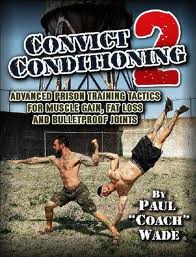The more I read Anchorite apologetics, the more I realize they never deal with Reformed Presbyterians, but Baptists. That’s cool. Baptists are ubiquitous. The problem is the subconscious projection of Baptist mentality upon Magisterial Presbyterianism.
Reading the Bible as Tradition by Andrew Stephen Damick.
Interestingly, I had this same thought yesterday. Question: is the LXX translation also a tradition? It most certainly is, since translations are tradition. I’ll come back to that.
I recently came across a conversation online in which someone insisted that he didn’t need tradition at all, because he had the Bible.
This statement is universally rejection by our confessions (though it is the American mindset, sadly).
If you are reading the Bible for yourself at home , then you are unlike most Christians in history, most of whom could never afford a Bible and many of whom could not read.
I agree 100%. This is why our confessions say that especially the preaching of the Word of God. This reinforces the Verbal Ontology that is from God’s revelation. So I say “amen” to the good father.
If you believe that the Bible’s meaning is simply apparent to you without anyone’s help, then you are discounting everything you have learned about what the Bible means from other people and even what language itself means
Again, I agree. The above mentality, typical of American evangelicals but firmly rejected by Confessional Protestants, is simply Greek autonomy in new dress. The desire for unmediated truth.
If you are reading a translation of the Bible, then you are trusting someone else’s word about what it says. The Bible never says it’s okay to use translations, and it doesn’t endorse one over another.
This is a good rebuttal to King James Onlyism. I would like to add my own thoughts. We see the apostles using both the LXX and the Hebrew traditions.
If you are reading the Bible in the original languages, then you not only had someone teach you Greek or Hebrew, but you also made a choice or accepted someone else’s choice when it came to which version of the Biblical text you would read. There are multiple manuscript traditions, and they’re not all the same.
See above. I took years of textual criticism and this is old hat.
If you are reading the Old Testament in Hebrew, then you’re not using the Old Testament most often used by the apostles in their writings, which was the Greek Septuagint, a translation of the Old Testament made by Greek-speaking Jews completed perhaps as early as the late second century BC.
I dispute that it’s overwhelmingly so. What we don’t see from the apostles is a clear endorsement of the LXX over the Hebrew, nor does it vindicate a lot of the LXX’s goofiness as a whole.
If you are reading the Old Testament at all, then you are benefiting from the Jewish community’s traditions of textual transmission and editing—and not just the Jewish community in general, but particular parties within Judaism, which as a whole had several different incipient canons all by the time of Christ. And within the text itself, there are clear signs that not everything written under someone’s name is from that person. For instance, the Books of Numbers and Deuteronomy, both attributed to Moses, include the details of his death and burial. How could Moses have written that? He didn’t. Those details were included in a process of tradition.
There is a lot of stupidity in American evangelicalism, but this borders on insulting their intelligence. Anyone with even a mediocre study bible knows all of this.
And the Bible you read may have a different Old Testament than the one the apostles did, i.e., not just different in language but with a different list of books (the Septuagint includes books like Tobit, Baruch and the Maccabees).
But in his above point he conceded that the Judaisms had multiple canons. How does he know that the apostles are using the Hellenized Alexandrian canon and not the Hebraic Palestinian one? Textual scholarship is by no means leaning towards the former view. After Beckwith it is hard to even countenance it.
But what I try to tell anchorites is that Protestants hold to tradition in a ministerial sense.
It’s impossible to read the Bible without tradition. Tradition gave you the Bible. So the question really is: Which tradition?
I’ll take it a step further: how do you know which tradition in a non-circular manner? This problem is by no means limited to sola scriptura. It is the heart of every claim to authority.
Argument: The Apostolic Church teaches it, therefore it must be so.
Dilemma: This is 100% circular reasoning. In order to accept this, you have to first accept the presupposition that the “apostolic” church in question is infallible, which is in and of itself circular reasoning. It should likewise be noted that I have heard this argument made even when all previous evidence already stated in this post has been brought forward. At this point, it’s just appealing to authority of the individual church group, despite evidence that this group is in error.
